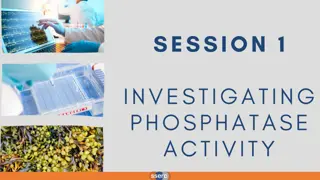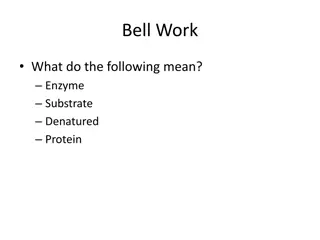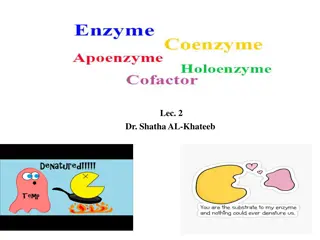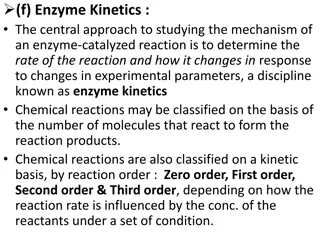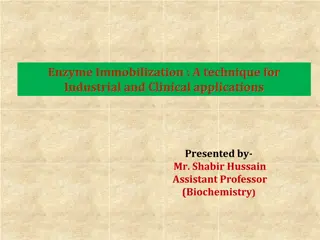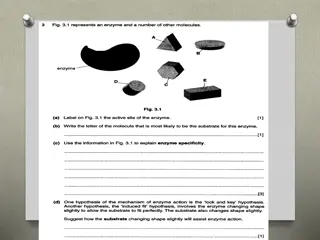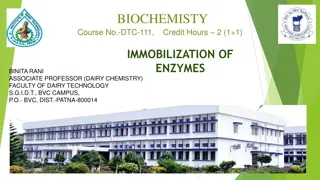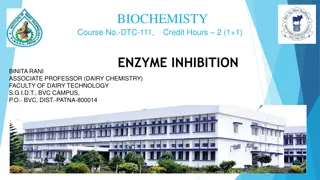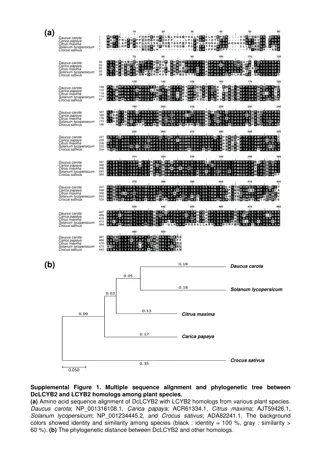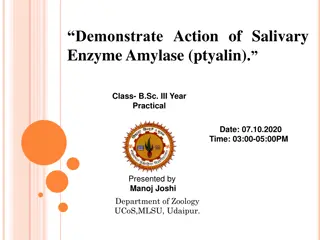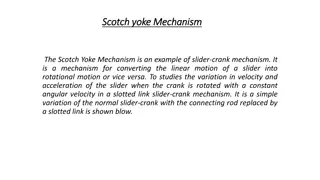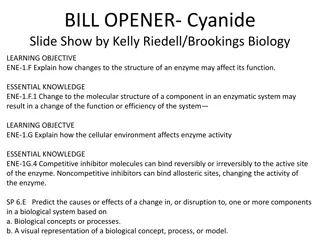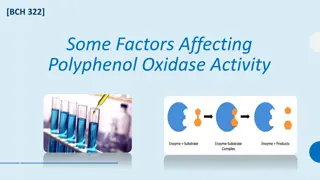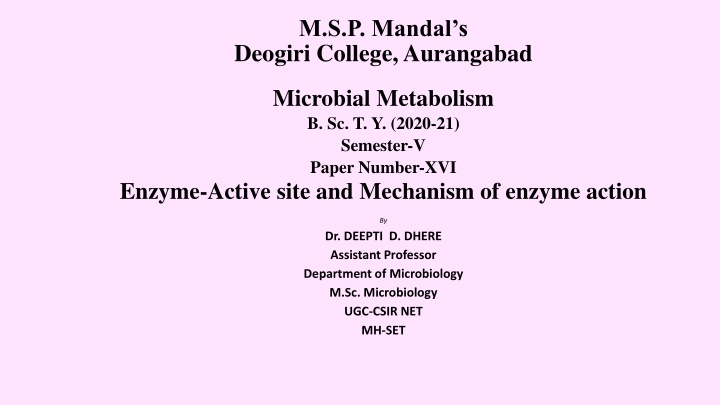
Enzyme Active Site and Mechanism of Enzyme Action Explained
Explore the fascinating world of enzymes, their active sites, and how they catalyze biochemical reactions with precision and efficiency. Understand the role of substrates and learn why enzymes are vital biocatalysts in biological processes.
Uploaded on | 2 Views
Download Presentation

Please find below an Image/Link to download the presentation.
The content on the website is provided AS IS for your information and personal use only. It may not be sold, licensed, or shared on other websites without obtaining consent from the author. If you encounter any issues during the download, it is possible that the publisher has removed the file from their server.
You are allowed to download the files provided on this website for personal or commercial use, subject to the condition that they are used lawfully. All files are the property of their respective owners.
The content on the website is provided AS IS for your information and personal use only. It may not be sold, licensed, or shared on other websites without obtaining consent from the author.
E N D
Presentation Transcript
M.S.P. Mandals Deogiri College, Aurangabad Microbial Metabolism B. Sc. T. Y. (2020-21) Semester-V Paper Number-XVI Enzyme-Active site and Mechanism of enzyme action By Dr. DEEPTI D. DHERE Assistant Professor Department of Microbiology M.Sc. Microbiology UGC-CSIR NET MH-SET
Points at a glance The term enzymes was firstly coined by Wilhem Khune (1878) The enzyme means in Yeast Activation energy is required to disrupt the electronic configurationThe enzymes are the biocatalyst which increases rate of biological reactions by decreasing activation energy and without being consumed and remain unaltered Activation energy- it is defined as the minimum amount of extra energy required by reacting molecule to get converted into product Enzymes are called as BIO-catalyst and not the catalyst As enzymes are proteins they are synthesized by ribosome on the endoplasmic reticulum in case of eukaryotes but in prokaryotes E.R is absent so enzyme is synthesized in cytoplasm by ribosomes. Thermodynamic changes takes place during the reaction catalysed by enzyme which are different from the spontaneous reaction Enzyme shows specificity for its action. Ribozymes are enzymes which are RNA in nature. During reaction enzyme can orient the substrate, it can exert strain on substrate and it can add chemical groups to substrate temporarily. Enzyme catalyse the reaction by covalent catalysis, acid-base catalysis and catalysis by proximity.
Learning objective- To know about enzyme, active site and mechanism of enzyme action Enzyme Definition- The enzymes are the biocatalyst which increases rate of biological reactions by decreasing activation energy and without being consumed and remain unaltered Biochemical reactions- It is the transformation of the one molecule in to another which are mediated by a catalyst called as Enzyme
All Enzymes are Proteins but all Proteins are not Enzymes Why only some proteins are enzymes? What makes enzyme different from other proteins? Active site Active site- Active site is the region of enzyme where substrate molecules binds and undergo biochemical transformations (Biochemical reactions).
What is substrate? Substrate is a reactant in biochemical reactions When enzyme binds to the substrate it forms enzyme substrate complex
Structure of Enzyme The active site of an enzyme is the region that binds substrate, cofactors and prosthetic group and contains the chemical groups that help to hold the substrate Active site occupy more than 5% of the total surface area of the enzyme Active site has specific shape due to tertiary structure of proteins Change in shape of protein (Enzyme) affects the shape of active site and function of the enzyme.
Active site Active site can be further divided- Binding site Part other than active site Active site Active site Enzyme Catalytic site
Properties of the active site, amino acids which enzyme use to bind with the substrate Size and shape of active site Polarity or non polarity Positive and negative charge Hydrophobic and hydrophilic nature Special properties of cofactors 1. Size and shape of active site- It can be created specifically to fit around a substrate 1. 2. 3. 4. 5. 2. Polarity or non polarity- Polar amino acids attracts polar moieties of substrate while non polar attract non-polar hence it leads to proper orientation of substrate to the active site and this leads to better fit. 3. Positive and negative charge- positive charge on amino acid attracts negatively charged part on substrate this again leads to proper fit of substrate to the active site 4. Hydrophobic and hydrophilic nature-like attracts like and hence hydrophobic amino acids interact with hydrophobic part of the substrate and same is for the hydrophilic amino acids 5.Special properties of cofactors- Many enzymes requires cofactor for its interaction and binding with the substrate
About Active site Enzyme has distinct cavity or cleft to which substrate bounds. This cleft is called as active site or centre . In active site amino acids are grouped together in such a way that their arrangement enable them to combine with substrate. Active site has reactive amino acids which may lie widely separated in polypeptide. The folding of polypeptide occurs in such a manner that distantly placed reactive amino acids come together to form an active site. Substrate molecule binds to the active site in such a way they it causes distortion of chemical bonds in substrate. This increases reactivity of the substrate with enzyme and speed up the reaction
Mechanism of Enzyme Action Catalytic efficiency of an enzyme can be explained by two perspectives- Thermodynamic changes Process at the Active site
Thermodynamic changes All chemical reactions have energy barriers between reactants and products The difference in the transitional state and substrate is called as activational barrier Only few products can cross the activation barrier and change into products. That is the main reason due to which rate of Uncatalyzed reaction is slow. Enzyme provides an alternative pathway for conversion of substrate into product Enzyme forms a transitional state which has low activational energy and hence accelerate the rate of reaction Hence the rate of reaction increases many fold in presence of enzymes Total energy of the system remains the same and equilibrium state is not disturbed.
Process at the Active site Covalent catalysis Catalysis by strain Catalysis by proximity Acid base catalysis

